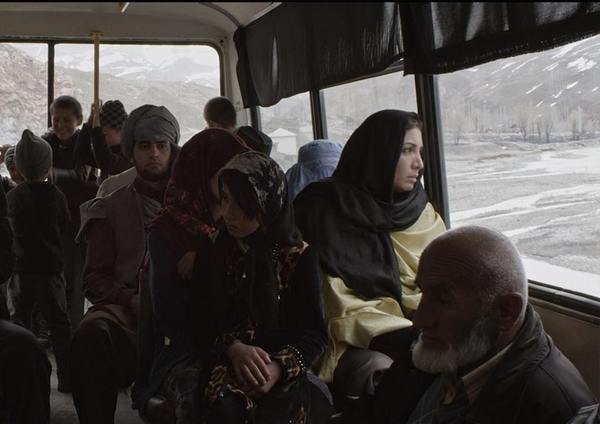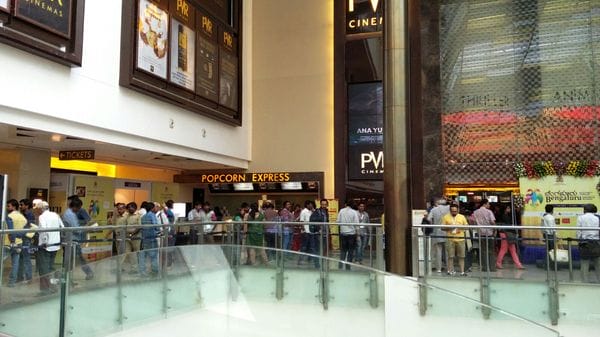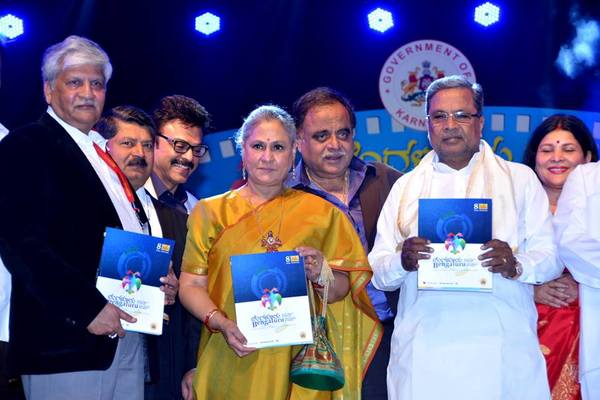So, it’s curtains down on the 8th edition of the Bengaluru International Film Festival. The week-long film festival that saw a grand opening at Vidhana Soudha premises, much to the criticism of those from film fraternity as well as cine-enthusiasts, however, has managed to wrap up smoothly.
There were many “firsts” for this year’s film festival’s credit. For the first time, the state government and Kannada Chalanachitra Academy took over the responsibility of organising completely, which had so far rested with Suchitra Film Society. Then again, for the first time, the Chief Minister himself led the Festival’s Organising Committee. In one more “first,” the organisers also experimented with the venue. The film festival which used to be organised in multiple venues spread across the city till last year, was changed to “under one roof” formula.
The film festival cannot be termed as ‘bad’ at all. But, then there was a lot of scope for improvement. Things would have been much better and easier, if the organisers had paid little more attention towards the issues that would pop up now and then.
Like in any other mega programme, the organisers received bouquets as well as brickbats. Though the initial technical glitches like delay in screening, disappearing subtitles, cancellation of screenings, not issuing daily passes to delegates etc were somehow resolved in the later days, the one thing that the audience largely cribbed about was standing in the never-ending queue, specially to watch some of the much-publicised movies.
If a screen with 300 seats was screening a movie at 6.15 PM, over 500 people were seen standing in the queue an hour and a half in advance eager to watch the movie. After waiting for an hour, the last 200 and odd would either be disappointed and go for another movie, or get into a squabble with the hapless student volunteers. The scene was the same for the screening of Kannada movie ‘Thithi’ on both the days when it was screened. There were a lot of them who were hopeful of watching the movie, but were frustrated because of inability to watch it even after the long wait.

A still from the Afghanstan-based movie Utopia. Pic courtesy: BIFFES FB page
A lesson from Goa film festival: ticket system
This issue could have been avoided, had the organisers taken a cue from the International Film Festival of India (IFFI), Goa. When I attended IFFI last November, I did not see any such squabbles over securing seats to watch the movies in Goa. It was because of the ticket issuing system (for free, meant for only confirming seats) adopted in IFFI.
Here’s how it was done in Goa: each delegate who has registered is given a slip in which one has to mention the three movies that he/she chooses to watch on a particular day. If you succeed to get the ticket, you can go and stand in the queue 15 minutes before the movie begins. If the tickets are sold out, you can change your preference accordingly.
Apart from tickets, yet another option of “rush queue” is made available. Delegates who were unable to get the tickets can stand in the rush queue. They are allowed to enter the cinema hall after the movie begins. However, the entry completely depends on the availability of vacant seats. Though IFFI had a limit of three movies per person officially, audience were allowed to watch additional movies wherever there were empty seats.
Exit and entry – a tiresome process
Exit and entry system at BIFFES was a total hassle. Audience had to exit from the theatre in a direction which led them out of PVR premises. Therefore, to enter the festival venue at PVR, one had to undergo security check / bag checking after watching every movie. A visibly upset security personnel told a fellow delegate “I don’t know how many times I have checked your bag today. I am convinced there is nothing inside the bag. Yet, we have to follow the procedure.”
The organisers might have resorted to this method of exit, to avoid the chaos that would arise when the audience are allowed to exit from the entry point (as there will be already a queue waiting near the entry to watch the next movie), but that didn’t really work out well for the delegates. People who wanted to watch the next movie in the same cinema hall too were made to get out and go, thus not being able to watch the next screening in the same hall.
Food – a heavy blow on the pockets
Yet another issue that bothered the delegates was unavailability of affordable food in the premises. As the festival was held in one of the poshest malls in the city (Orion Mall), the only two options available for the crowd were the snacks counter at PVR cinemas and the food court in the mall. Both were quite expensive for a middle class person to afford. Food price must have taken a good cut from the pockets of the cine-lovers who spent all the seven days in the mall! There were no good eateries outside the mall where delegates could go and have food.

Only decent option for food available to people inside the multiplex area was popcorn. Pic: Shree D N
A separate affordable food joint, or discounts at the existing food courts for BIFFES delegates would have easily solved the problem. In fact, a momo joint in the Orion Mall food court tried the gesture of extending 50% discount for BIFFES delegates, voluntarily, which was hailed by many delegates who took to social media to highlight it.
Senior citizens annoyed
Senior citizens whom I spoke to wished the organisers had given preference to them in all the screens. “While in some screens we were allowed to walk into the theatre without standing in the queue, in some screens they made us wait in the queue. Also, it would have been nice if a few seats were reserved for senior citizens inside the hall, so that we need not have to run around in search of seats,” said Desaiah, a retired government employee.
Which is better: single venue or multiple venues?
The most common discussion at the film festival revolved around single venue v/s multiple venues. While some of the delegates liked the earlier system of organising the film fest at multiple venue as it is convenient for people to visit to the closest theatre near their home, some were in favour of the new method of organising the fest under one roof as there was always a choice when one was unable to see the preferred movie.
Sheela N, a cine lover who had visited the BIFFES last year too, said that last year it was convenient for her to go to the nearest screening venue unlike this year where she had to travel over 20 km to reach Orion Mall. “But then, this system too is good, as we can easily watch the movies of our choice in the same place, without running around to different venues like previous year. Both the systems have advantages and disadvantages,” she pointed.
While multiple venues would be great for people to visit, logistically it makes sense to have one or two strong locations with multiple screens in Bengaluru for a film festival of this scale. Next time, the organising team could add one more multiplex located in another part of the city to the venue list, with all other affordable value additions for the delegates.

Director S V Rajendrasingh Babu, Bollywood actor Jaya Bachchan, Minister Ambarish, CM Siddaramaiah, actor Jayamala and other dignitaries on the inaugural day of BIFFES. Pic courtesy: BIFFES FB page
Invitations not sent, egos hurt
As the responsibility of preparing invitations was with the organisers, there were some egos hurt, resulting in scenes such as some directors and actors of the screened films not being invited for the festival. Lingadevaru, the director of ‘Nanu Avanalla AvaLu’, a pathbreaking film in Kannada, was upset regarding the ‘treatment of the organisers towards Kannada movie fraternity’ because the hero(ine) of the film. Sanchari Vijay who won national award for the film, was not invited for the screening. The organisers put the blame on the government, as it was the government’s duty to decide who needed to be invited to the film.
Many directors and VIP delegates were seen cribbing over having no separate lounges for filmmakers to get together and connect to each other. There was a screen dedicated to interactions with directors etc but the interactions were formal and there was not much of a personal connect.
Since the BIFFES has completed eight years, it now qualifies to be recognised by the International Federation of Film Producers’ Association (FIAPF). This recognition will open up the possibility of having an international film bazaar or film directory in the future. There are also talks of the formation of a Directorate of Film Festival to handle the venue, events and schedules etc. Let’s hope our own Bengaluru’s film festival, BIFFES emerges in a better and improved version next year!
Shree D N, Associate Editor, Citizen Matters, contributed to this story.
Related Articles
170 films from 18 languages: a filmy treat for movie buffs in Bengaluru
Kasaravalli on cities, and cities in his films
Intermissions in films: Who benefits from them?
Krupakar-Senani pack punch into wild dog film
Stopping Kannada film theft with online movies
Kannada film’s anti-piracy stunt backfires
It was cringe worthy to hear Jaya Bachchan say she couldn’t speak “Karnatakan” during her speech. Also, Shobhana’s dance went on for ever and ever. The dance section on History of Kannada Film Music was very well done though. Do you know if its available on Youtube?